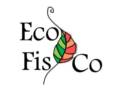Does age matter under winter photoinhibitory conditions? A case study in stems and leaves of European mistletoe (Viscum album).
- Egileak:
- Míguez F, Fernández-Marín B, Hernández A, Becerril1 JM, García-Plazaola JI
- Urtea:
- 2015
- Aldizkaria:
- Functional Plant Biology
- Liburukia:
- 42
- Hasierako orria - Amaierako orria:
- 175 - 185
- Deskribapena:
-
Abstract
European mistletoe (Viscum album L.) is a hemiparasitic plant with perennial leaves and photosynthetic stems easily discernible according to their age. These properties make V. album the perfect species to (i) compare the mechanisms of seasonal acclimation of photosynthetic stems with those of leaves, and (ii) evaluate the influence of ageing in the efficiency of photosynthetic tissues. To achieve these general objectives, photosynthetic pigments, maximal photochemical efficiency of PSII (Fv/Fm), recovery kinetics and key thylakoidal proteins were analysed during winter and spring in leaves and at different age stems. During winter, some woody species are able to maintain photosynthetic activity, but at lower rates than during spring. In the case of V. album, photosynthetic relevance of green stems appears equal to leaves in terms of total area. Besides, mistletoe stems are able to maintain higher Fv/Fm and lower level of antioxidants than leaves, especially during winter season. The recovery from winter photoinhibition is also faster in stems than in leaves. Thylakoidal protein composition (mainly high levels of D1) also supports the idea of stems as main photosynthetic organs in V. album during winter. Further, in winter, the level of photoinhibition of V. album stems decreased concomitantly with ageing. This work highlights the importance of stem photosynthesis in plant carbon balance and demonstrates that ageing does not necessarily imply a loss of vitality in stems.



